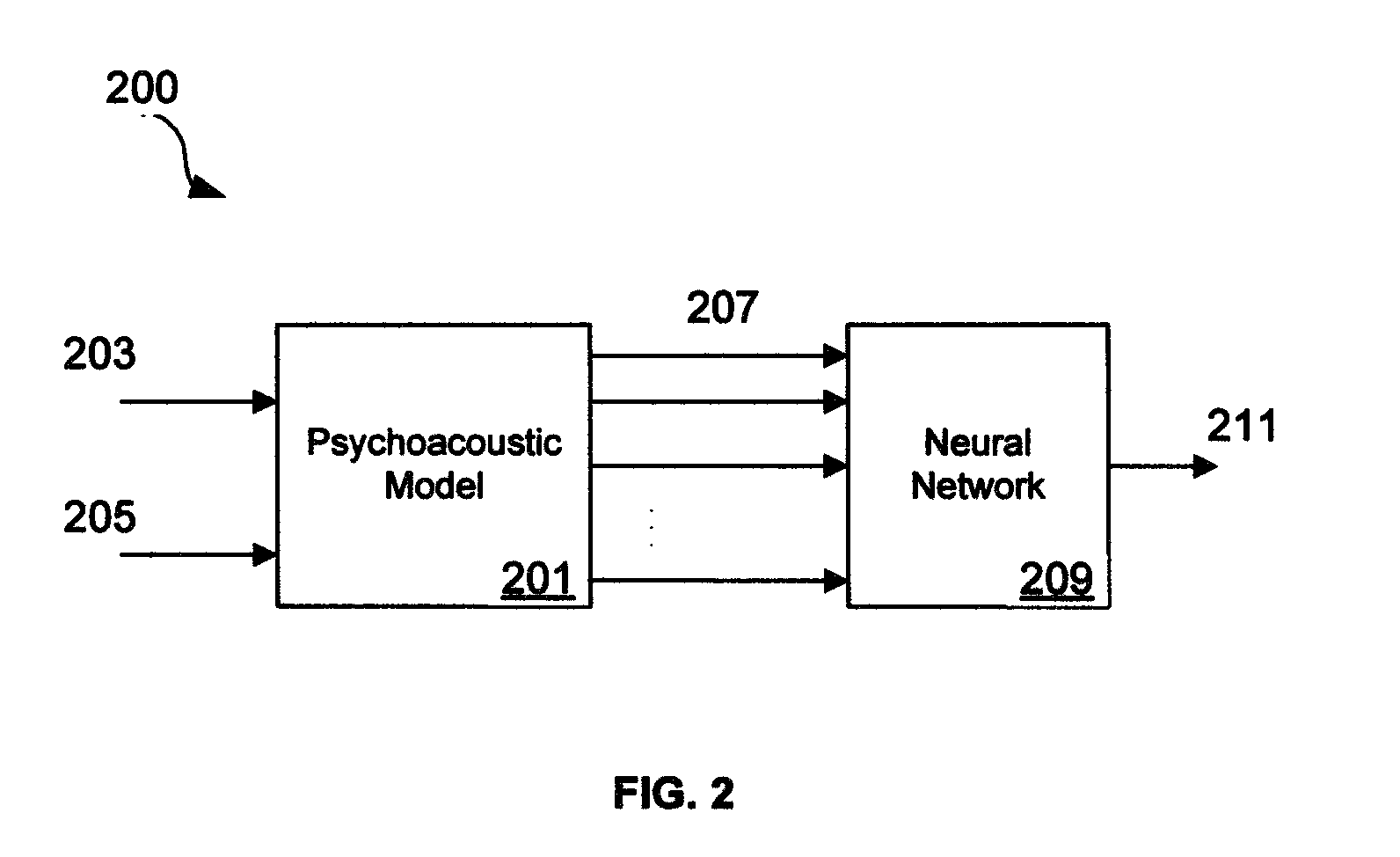Method and apparatus for determining audio spatial quality
a spatial quality and audio technology, applied in the field of audio spatial quality assessment, can solve the problems of lossy data compression, file compression using lossy methods suffering from a variety of distortions, and may or may not be perceivable to the human ear or eye, and limit human perception
- Summary
- Abstract
- Description
- Claims
- Application Information
AI Technical Summary
Benefits of technology
Problems solved by technology
Method used
Image
Examples
implementation example
[0068]An exemplary implementation of a spatial audio quality assessment is described below.
[0069]The estimation of spatial cues can be implemented in various ways. Two examples are given in Frank Baumgarte and Christof Faller, “Binaural Cue Coding—Part I: Psychoacoustic Fundamentals and Design Principles,” IEEE Trans. Audio, Speech, and Language Proc., Vol. 11, No. 6, November 2003, which is hereby incorporated by reference in its entirety, and in “Binaural Cue Coding—Part II: Schemes and Applications,” referenced above. Alternative implementations can be found in ISO / IEC, “Information Technology—MPEG audio technologies—Part 1: MPEG Surround,” ISO / IEC FDIS 23003-1:2006(E), Geneva, 2006, and ISO / IEC, “Technical Description of Parametric Audio Coding for High Quality Audio,” ISO / IEC 14496-3-2005(E) Subpart 8, Geneva, 2005, both of which are hereby incorporated by reference in their entirety.
[0070]A spatial cue analyzer 800 is shown in FIG. 8. The input consists of the audio signals of...
PUM
 Login to View More
Login to View More Abstract
Description
Claims
Application Information
 Login to View More
Login to View More - R&D
- Intellectual Property
- Life Sciences
- Materials
- Tech Scout
- Unparalleled Data Quality
- Higher Quality Content
- 60% Fewer Hallucinations
Browse by: Latest US Patents, China's latest patents, Technical Efficacy Thesaurus, Application Domain, Technology Topic, Popular Technical Reports.
© 2025 PatSnap. All rights reserved.Legal|Privacy policy|Modern Slavery Act Transparency Statement|Sitemap|About US| Contact US: help@patsnap.com



